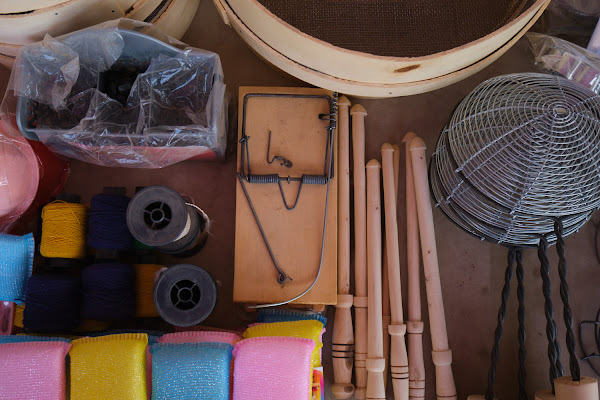The most ubiquitous thing in Uzbekistan is the traditional bread called "non" or in Russian, "lepeshka." Life in the country can't exist without a constant flow of the delectable, circular stuff. Uzbeks eat it everyday with every meal. Since it's eaten fresh, it's best to pick up a loaf on the way home.
Non is a local, handmade bread, not mass produced and sitting next to Twinkies and Tastykakes. Some offense to those chemical delivery devices. Where to find non? Let's check out a typical "factory."
Start at your neighborhood flour seller, plenty of varieties with colorful graphics on their bags.
The recipe is basic, the usual flour, water, salt, yeast. Divide into balls and let rise. The non gets its unique shape in the roll out. Turn into a disk and then use an iconic stamp that features a dot pattern produced by nails.
Prepped loafs.
The final touches before a slap into the oven. Another, outer ring stamp, an egg wash and then black sesame seeds. Now we're cooking. The bread is baked in a tandir, thrown against the hot walls for just minutes.
The master baker uses a special metal canister to pluck a loaf off the tandir wall and onto a cooling rack. Done.

Mmmm, fresh non. Time for distribution. Forget big trucks, round up small kids and a cart. Load 'em up.
And off they go. Your factory's reach is as far as that little cart will wander. Staying traditional and local.

























































